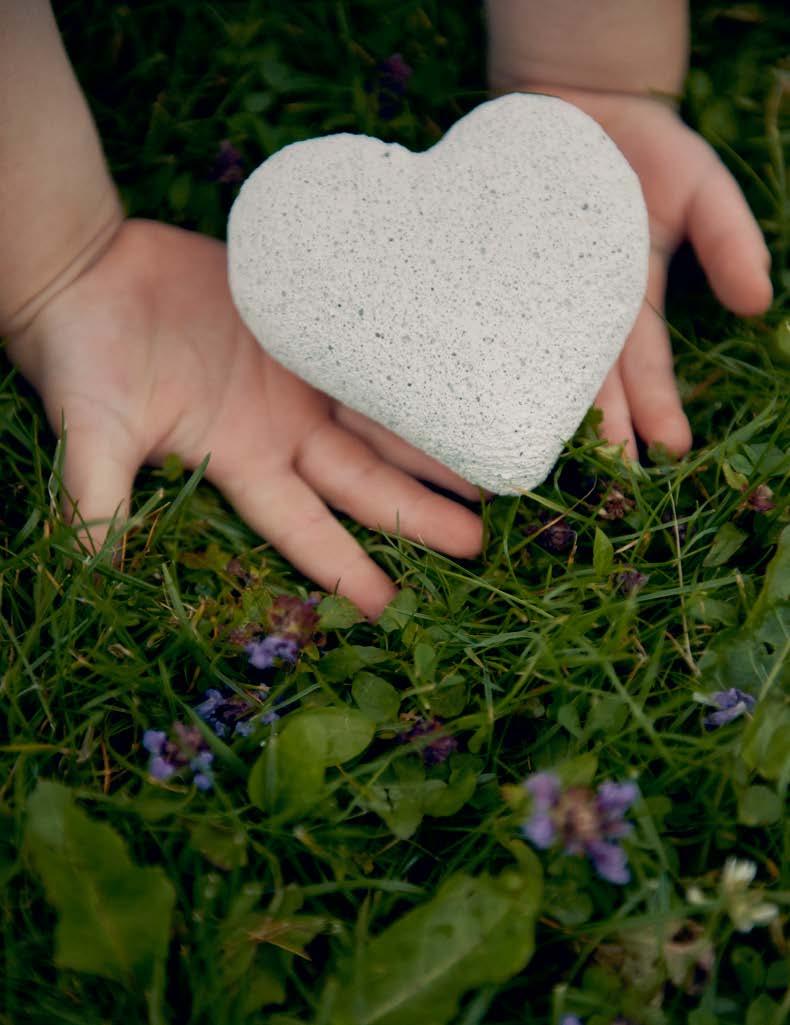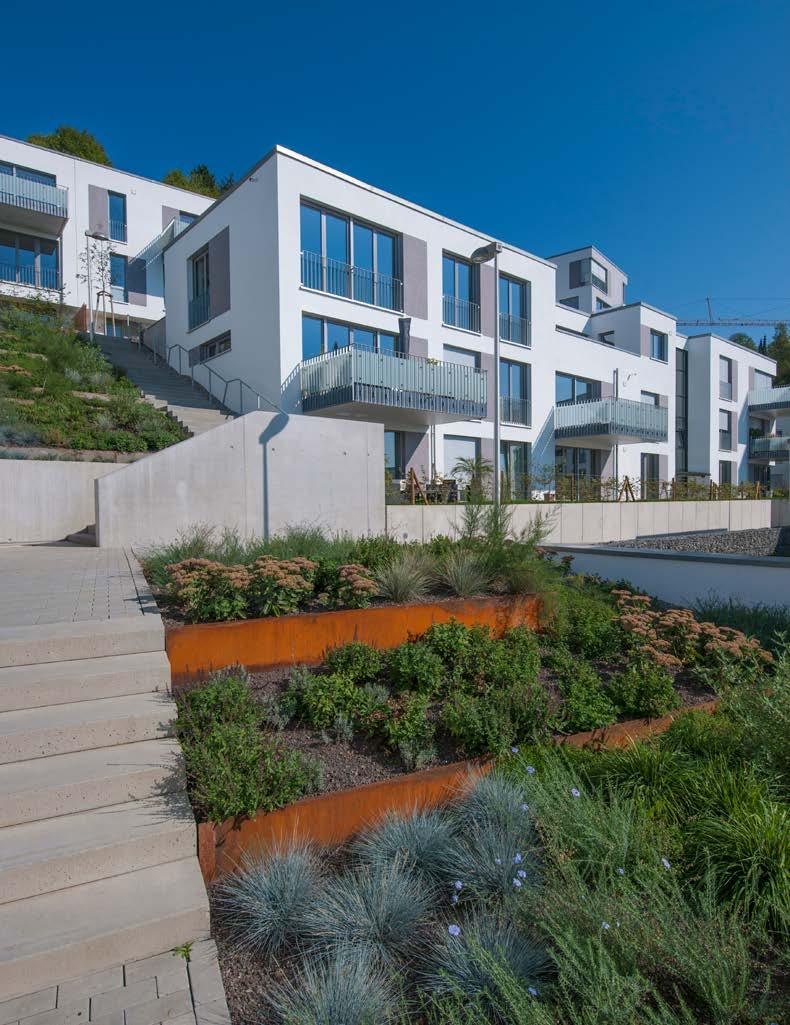
6 minute read
Climate & environment
Our ambition is to significantly reduce our Scope 1 and 2 emissions and continuously improve our resource use
SDG 7 Affordable and clean energy
Advertisement
SDG 9 Industry, innovation and infrastructure
SDG 12 Responsible consumption and production
H+H’s commitments
• We commit to reduce absolute Scope 1 and 2 GHG emissions by 46% by 2030 from a 2019 base year, equivalent to a 4.2% reduction each year
• Reduce energy consumption per m3 by 7% vs. 2019 base line of 565 MJ per m3 by 2024
• Reduce water usage by 5% by 2024 vs. 2019 base line of 382 litres per m3
• Achieve zero waste to landfill by 2024
• Achieve net-zero emissions in H+H’s operations by 2050
Reducing Scope 1 and 2 emissions
We are comitted to taking responsibility for our own environmental footprint, and to decouple it from growth by reducing emissions from our own operations and improving our use of resources.
H+H’s Scope 1 and 2 emissions are significantly lower than the upstream Scope 3 emissions associated with the production of cement and lime and have the advantage of being within our direct control to reduce.
The boilers that generate steam to autoclaves in our factories use gas and coal as the primary fuel sources. Therefore, switching to lower-carbon energy sources offers the greatest impact to reduce Scope 1 and 2 emissions.
H+H is targeting a 46% reduction in Scope 1 and 2 emissions by 2030 through three reduction levers:
1. Optimising equipment As factories are upgraded and equipment is replaced, there are inherent energy reductions that will be harvested. Such upgrades and modernisations are essential in having an optimised manufacturing footprint and equipment and the investments will not solely rely on sustainability decision criteria. In addition, dedicated ESG investments to lower water and energy consumptions and reduce carbon emissions have been planned. These include targeted investments to insulate pipes, autoclave doors, and to replace the most energy-consuming equipment. 2. Improving energy mix The current energy infrastructure has been chosen based on its cost profile. Alternatives that will reduce the carbon emissions and investments are divided into three main categories. These are expected to:
- Phase out purchase of steam generated from coal
- Reduce the number of coal-fired factories by converting the fuel source to relatively more carbon light alternatives
- Convert the best located factories to hydrogen
3. Increasing the share of renewables Over the coming years our purchase of electricity will increase to 100% renewable electricity through either Renewable Energy Certificates ("RECs") or Power Purchase Agreements ("PPAs").
Energy efficiency
Our existing short-term target is to reduce energy consumption per m3 by 7% by 2024 vs. a 2019 base line of 565 MJ per m3 .
Water management
Most of our factories are located in rural areas, and none in areas with extremely high water stress. Water is extracted from our own wells in accordance with relevant legislation and covered by permits. Two of our factories are located in areas with high water stress. We aim to continuously improve our water resource
management and have set a target to reduce water usage by 5% by 2024 against a 2019 base line of 382 litres per m3 .
Waste management
We have robust waste management practices through a “reduce, reuse, and recycle” approach. We continue to focus on waste and resource efficiencies and take practical steps in our operations to reduce waste. The continuous optimisation of recipes for products, recycling of failed batches and reduction of waste are integral parts of normal business procedures.
Biodiversity
We do not operate quarries and mines, except in Poland, where we operate a few sand pits to supply sand into our own manufacturing process. In line with our ESG policy, we are committed to ensuring that environmental responsibility is always considered when we do business and to complying with all environmental legislation with regards to operating the sand pits.
Access to sand
There is no shortage of sand as a raw material (availability)—but much of it is not suitable for current requirements, neither economic nor legal to extract (accessibility). With a strong governance in H+H’s major European markets, the substantial environmental problems resulting from sand extraction globally are absent. The constraint on sand resources in Europe is not availability; it’s accessibility through legislative and environmental governance pressures.
Sand demand closely tracks overall economic performance. Predictions of future demand for sand in Europe are relatively coherent and also closely aligned with overall economic growth, growing at low single digit percentages annually—at least, prior to Covid-19. ‘Post Covid-19’ predictions from the European Aggregates Association suggest an overall EU/EFTA decline for 2020 of 15%, reducing 2020 total production to a level last seen at the end of the previous financial crisis in 2013. This supports the arguments around our product portfolio as being sustainable and highly relevant as building materials for the future.
Climate & environment performance
In 2021, net CO2e Scope 1 and 2 emissions increased by 13,412 tonnes. The emissions are largely a factor of the energy consumption. This was predominantly driven by higher production volume, but also some cold winter months, more need to mill sand and output inconsistency.
Energy consumption increased by 9% from around 2.2 million GJ to 2.4 million GJ. The factories have
Climate & environment
CO2e Scope 1
CO2e Scope 2 CO2e Scope 3 CO2e Scope 1 (direct) CO2e Scope 2 (indirect emissions from the generation of purchased energy)
CO2e Scope 3 (indirect emissions from the generation of purchased good and services)
Energy consumption Total energy per m3
Fresh water consumption Fresh water consumption per m3 Unit 2021 2020 2019
Tonnes 139,304 126,528 148,692
Tonnes 46,339 45,703 50,276
Tonnes 631.996 590.991 678.840
kg / m3
kg / m3 32
11 31
11 35
12
kg / m3 146 147 158
GJ 2,396,080 2,195,301 2,419,731
MJ 553 546 565
m3 1,519,616 1,446,375 1,637,094
Litres 351 359 382
Lower water usage 8%
reduction in water intensity vs. base year 2019 been running at almost full capacity utilisation, and the autoclaves have been on to secure output.
Unfortunately, output inconsistency has reduced the utilization of the autoclaves, and as a consequence of this the relative energy consumption has increased vs. 2020. In 2021, the Polish operation again managed to improve their energy consumption and is now the most energy efficient region within the Group.
The Scope 1 and 2 emissions intensity increased only slightly compared to 2020 helped by favorable mix effects and slight increase in share of renewable energy.
Comparing 2021 to 2019 on which the 2024 target was set shows an improvement, both in absolute and relative terms. The production volume has increased with 1% and the absolute energy consumption decreased 1% over the two years.
The 7% reduction target is still within range as two factory upgrades was done in 2021 and another major upgrade is scheduled for 2022. This, together with minor investments and better utilisation will drive the relative consumption down over the next years.
Relative fresh water consumption decreased again in 2021 thanks to continuous focus on reducing waste and recycling more water and steam in the autoclaving process. The absolute increase is due to higher production volume.




